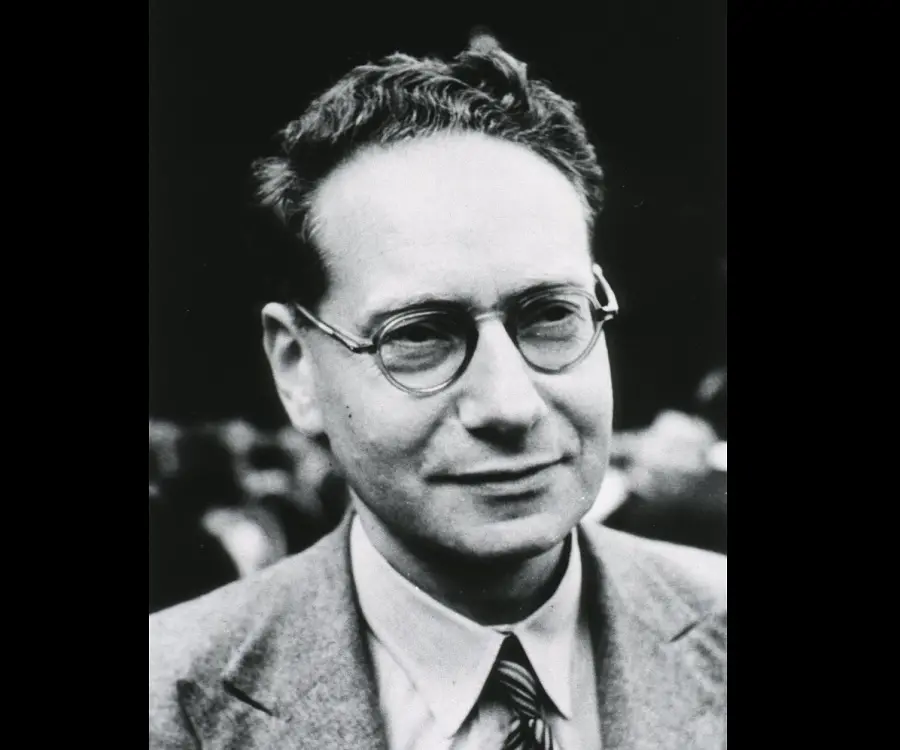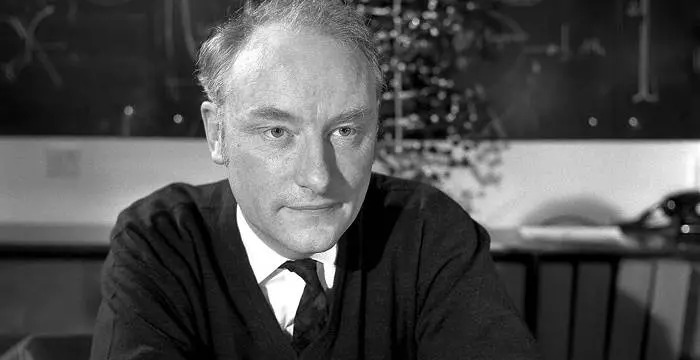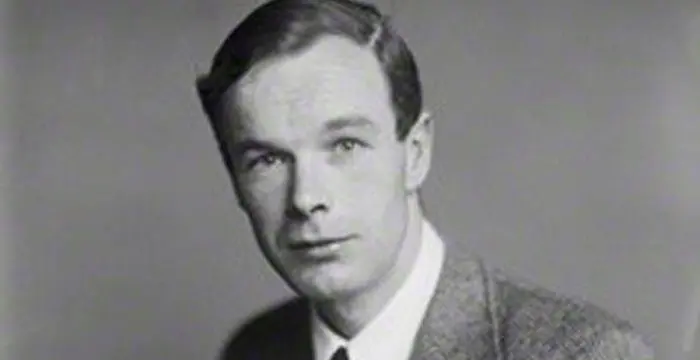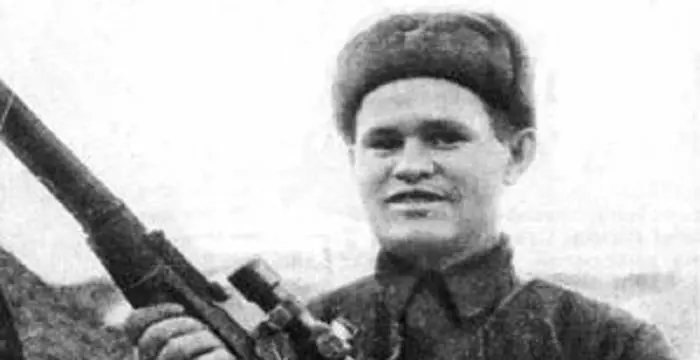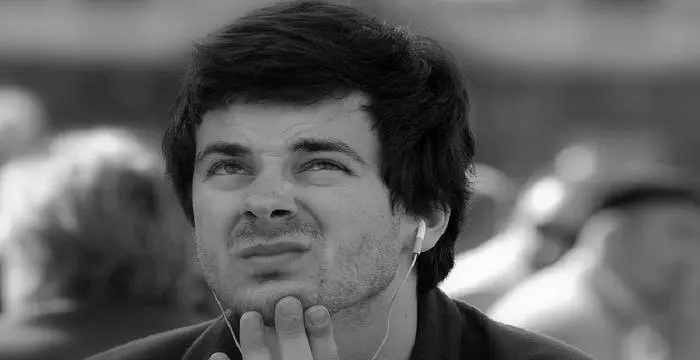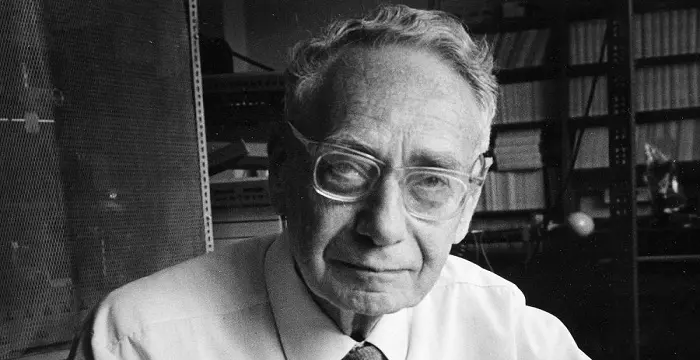
Sir Bernard Katz - Biophysicists, Career and Personal Life
Sir Bernard Katz's Personal Details
Sir Bernard Katz was a German born biophysicist who is known for his remarkable work on nerve biochemistry
| Information | Detail |
|---|---|
| Birthday | March 26, 1911 |
| Died on | April 20, 2003 |
| Nationality | British |
| Famous | Scientists, Biophysicists |
| Spouses | Marguerite |
| Birth Place | Leipzig, Germany |
| Gender | Male |
| Sun Sign | Aries |
| Born in | Leipzig, Germany |
| Famous as | Biophysicist |
| Died at Age | 92 |
// Famous Scientists
Juliane Koepcke
Juliane Koepcke is a German-Peruvian biologist, who was the lone survivor among the 92 passengers and crew of the ill-fated LANSA Flight 508 that crashed in the Peruvian rainforest on 24 December 1971. Know more about her life in this biography.
Henry Cavendish
Henry Cavendish was a theoretical chemist and physicist, renowned for discovery of hydrogen and calculation of the mass of earth. To know more about his childhood, profile, timeline and career read on
Konstantin Tsiolkovsky
Konstantin Tsiolkovsky was a Russian rocket scientist and a pioneer of astronautics. This biography provides detailed information about his childhood, family, personal life, career, achievements, etc.
Sir Bernard Katz's photo
Who is Sir Bernard Katz?
Sir Bernard Katz was a German born biophysicist who is known for his remarkable work on nerve biochemistry. He, along with Julius Axelrod and Ulf von Euler, was one of the co-recipients of the 1970 Nobel Prize in Physiology or Medicine. He belonged to a Jewish family originally from Russia. From the childhood, he faced lot of discriminations because of his religion. However, when at the age of twenty-two, he could not publicly receive Siegfried Garten prize because he was dubbed non-Aryan, he decided to migrate. Soon after receiving his degree in medicine from the University of Leipzig, he went to England to work under Archibald Vivian Hill—who was known for rescuing more than 900 academics from Nazi persecution—at University College London (UCL). There, he finished his doctoral work within a short time, but received his degree only after he had received his British citizenship. After the World War II, he joined his alma mater UCL and undertook research on nerve impulse. His work on that subject earned him Nobel Prize. More importantly, it had immense influence both on physiology and pharmacology. He also headed the Department of Biophysics for a long time and under him it became a center of excellence.
// Famous Biophysicists
James Watson
James Watson is an American molecular biologist and geneticist who played a crucial role in the discovery of the molecular structure of D.N.A. This biography provides detailed information about his childhood, life, achievements, works & timeline
Francis Crick
Francis Crick was an English molecular biologist, biophysicist and neuroscientist, who received the Nobel Prize for Medicine. This biography profiles his childhood, life, career, achievements and timeline.
Alan Lloyd Hodgkin
Sir Alan Lloyd Hodgkin was an English biophysicist and a physiologist who received the Nobel prize in Physiology or Medicine in 1963. This biography profiles his childhood, life, research, achievements and timeline.
Childhood & Early Life
Bernard Katz was on 26 March 1911, in Leipzig, Germany. His father, Max Katz, was a Jewish merchant of Russian origin, who left his homeland in 1904. His mother, Eugenie (Rabinowitz), was Polish. Bernard was the only child of his parents and he had a very unorthodox upbringing.
In 1917, the Bolsheviks seized the power in Russia and with that the Katz family lost their citizenship. They thus became stateless.
In 1920, nine-year-old Bernard had his first taste of discrimination when he was refused admission to Schiller Real Gymnasium because of his religion.
In 1921, he was admitted at König Albert Gymnasium. Here Bernard took up Latin and Greek because it allowed him more time to play chess at the local café. Nonetheless, he also acquired a good grade in mathematics.
In 1929, he enrolled at the University of Leipzig to study medicine. Soon after completing his preclinical examination Katz started research work under Martin Gildermeister. It earned him Siegfried Garten prize in 1933. Unfortunately, because of Nazi policies, the committee was forced to announce that the prize could not be given to any non-Aryan. He, however, received the prize money in private.
The incident opened his eyes and Katz soon realized that Germany was not safe for him. Yet, he had to wait for one more year and finish his course. Finally he received his degree in 1934.
In February 1935, he left for England armed with a letter of recommendation from Martin Gildermeister, a stateless-persons-pass from the League of Nations, and four pounds. In England, he joined the laboratory of Archibald Vivian Hill at the University College of London as a PhD student.
Although he could not speak fluently in English he soon picked up the language. More importantly, he had an excellent writing style and an uncanny knack of picking up the core issues of the problem he was dealing with.
Katz finished his doctoral work in 1938, but had to wait till 1942 to receive his degree. Also in 1938, he received Beit Memorial Research Fellowship and with that he continued working at Hill’s laboratory until August 1939.
Career
In 1939, Bernard Katz received the Carnegie Fellowship and with that he joined the laboratory of Australian neurophysiologist, John Carew Eccles, at the Kanematsu Institute of Sydney Medical School. During that period, he was also invited to give research lectures at the University of Sydney,
In 1941, while he was working in Australia, Katz became a naturalized British citizen and received his first legally valid passport. Next, in 1942, he received his doctoral degree and joined Royal Australian Air Force as a radar officer in New Guinea.
As the Second World War ended in 1945, Katz received an invitation from A.V. Hill asking him to return to University College of London. Accordingly, he went back to England in 1946 and joined UCL as an Assistant Director of Research in Biophysics and Henry Head Research Fellow.
At UCL, Katz mainly worked on the method, in which nerve impulse is transmitted from nerve fiber to muscle fiber and earned great distinction. In 1950, he was appointed as the Reader in Physiology at the University College London.
As Hill retired in 1952, Katz succeeded him as Professor of Biophysics, remaining in that position until 1978. During that period, he earned distinction both as the head of the department and also as an outstanding researcher.
In his long career as a distinguished scientist he directly supervised only three doctoral students; Paul Fatt, Bob Martin and Donald Jenkinson. All of them went on to become distinguished scientists in their own right.
Under his stewardship, the Department of Biophysics at UCL became a center of excellence. Researchers from all over the world came here to work under him and benefited from his advice.
Major Works
All through his career Katz had mostly worked on functioning of nerves and muscles. However, he is best remembered for his ‘quantal hypothesis’, which helped to explain the fundamental physiological mechanism of transmitter release.
While working with frogs in 1950s, Katz along with Paul Fatt, observed that neurotransmitter (identified as acetylcholine) is released in the multi-molecular packets, known as ‘quanta’. On further experimentation, he realized that they correspond with synaptic vesicles in the motor nerve terminals.
Working with Ricardo Miledi in late 1960s, he advanced his hypothesis and established that exocytosis is triggered by influx of Ca2+, which in its turn is induced by depolarization. Later they measured the voltage noise induced in muscle by acetylcholine and deduced properties of single ion channels. The discovery led to the development of molecular neuroscience.
In addition to his scientific achievements, Katz also authored several books, which were admired as much for their contents as for his crisp, unpretentious writing style. These books are: ‘Electric Excitation of Nerve’ (1939), ‘Nerve, Muscle and Synapse’ (1966), and ‘The Release of Neural Transmitter Substances’ (1969).
Awards & Achievements
In 1970, Bernard Katz was awarded the Nobel Prize in Physiology or Medicine for his discovery “concerning the humoral transmittors in the nerve terminals and the mechanism for their storage, release and inactivation”. He shared the prize with Ulf von Euler, and Julius Axelrod, who separately worked on the same topic.
Prior to that, Katz had received Feldberg Foundation Award in 1965; Baly Medal from Royal College of Physicians and Copley Medal from Royal Society in 1967. He was also knighted in 1969.
Personal Life & Legacy
In 1945, soon after the end of the Second World War, Katz married Marguerite Penly. She was from Cremorne, New South Wales. They had two children; David, and Jonathon. While David followed his father’s footsteps to become a scientist, Jonathon became a Public Orator at the University of Oxford.
Even after retiring in 1978, Katz remained associated with the University College, London as emeritus professor.
Since childhood Katz was very fond of playing chess. He played the game remarkably well until the end.
He died in London on 20 April 2003, at the age of 92. He remained scientifically active long after his retirement. Katz's wife died in 1999, and he himself died at age 92 on April 20, 2003.
// Famous Aries Celebrities peoples
Skai Jackson
Skai Jackson is an American child actress with huge fan following. Find more about her family & personal life, relationships, facts and more.
Shemar Moore
Shemar Moore is a model turned actor best known for his role in the television series ‘The Young and the Restless’. This biography of Shemar Moore provides detailed information about his childhood, life, achievements, works & timeline.
Vasily Zaytsev
Vasily Zatysev was a Russian sniper who served during the World War II. Check out this biography to know about his childhood, family life, achievements and fun facts about him.
Sir Bernard Katz's awards
| Year | Name | Award |
|---|---|---|
Other | ||
| 0 | 1970 - Nobel Prize in Physiology or Medicine | |
| 0 | 1967 - Copley Medal | |
Sir Bernard Katz biography timelines
- // 26th Mar 1904 To 26th Mar 1911Bernard Katz was on 26 March 1911, in Leipzig, Germany. His father, Max Katz, was a Jewish merchant of Russian origin, who left his homeland in 1904. His mother, Eugenie (Rabinowitz), was Polish. Bernard was the only child of his parents and he had a very unorthodox upbringing.
- // 1917In 1917, the Bolsheviks seized the power in Russia and with that the Katz family lost their citizenship. They thus became stateless.
- // 1920In 1920, nine-year-old Bernard had his first taste of discrimination when he was refused admission to Schiller Real Gymnasium because of his religion.
- // 1921In 1921, he was admitted at König Albert Gymnasium. Here Bernard took up Latin and Greek because it allowed him more time to play chess at the local café. Nonetheless, he also acquired a good grade in mathematics.
- // 1929 To 1933In 1929, he enrolled at the University of Leipzig to study medicine. Soon after completing his preclinical examination Katz started research work under Martin Gildermeister. It earned him Siegfried Garten prize in 1933. Unfortunately, because of Nazi policies, the committee was forced to announce that the prize could not be given to any non-Aryan. He, however, received the prize money in private.
- // 1934The incident opened his eyes and Katz soon realized that Germany was not safe for him. Yet, he had to wait for one more year and finish his course. Finally he received his degree in 1934.
- // Feb 1935In February 1935, he left for England armed with a letter of recommendation from Martin Gildermeister, a stateless-persons-pass from the League of Nations, and four pounds. In England, he joined the laboratory of Archibald Vivian Hill at the University College of London as a PhD student.
- // 1939In 1939, Bernard Katz received the Carnegie Fellowship and with that he joined the laboratory of Australian neurophysiologist, John Carew Eccles, at the Kanematsu Institute of Sydney Medical School. During that period, he was also invited to give research lectures at the University of Sydney,
- // 1941 To 1942In 1941, while he was working in Australia, Katz became a naturalized British citizen and received his first legally valid passport. Next, in 1942, he received his doctoral degree and joined Royal Australian Air Force as a radar officer in New Guinea.
- // 1945 To 1946As the Second World War ended in 1945, Katz received an invitation from A.V. Hill asking him to return to University College of London. Accordingly, he went back to England in 1946 and joined UCL as an Assistant Director of Research in Biophysics and Henry Head Research Fellow.
- // 1945In 1945, soon after the end of the Second World War, Katz married Marguerite Penly. She was from Cremorne, New South Wales. They had two children; David, and Jonathon. While David followed his father’s footsteps to become a scientist, Jonathon became a Public Orator at the University of Oxford.
- // 1950At UCL, Katz mainly worked on the method, in which nerve impulse is transmitted from nerve fiber to muscle fiber and earned great distinction. In 1950, he was appointed as the Reader in Physiology at the University College London.
- // 1952 To 1978As Hill retired in 1952, Katz succeeded him as Professor of Biophysics, remaining in that position until 1978. During that period, he earned distinction both as the head of the department and also as an outstanding researcher.
- // 1970In 1970, Bernard Katz was awarded the Nobel Prize in Physiology or Medicine for his discovery “concerning the humoral transmittors in the nerve terminals and the mechanism for their storage, release and inactivation”. He shared the prize with Ulf von Euler, and Julius Axelrod, who separately worked on the same topic.
- // 1978Even after retiring in 1978, Katz remained associated with the University College, London as emeritus professor.
- // 20th Apr 2003He died in London on 20 April 2003, at the age of 92. He remained scientifically active long after his retirement. Katz's wife died in 1999, and he himself died at age 92 on April 20, 2003.
// Famous British peoples
Wentworth Miller
Wentworth Miller is an American actor and screenwriter who achieved recognition for his role in the TV series ‘Prison Break’.
Sophie Reade
Sophie Victoria Reade is a British model and reality show star. Let’s take a look at her family and personal life, including her age, birthday, boyfriends, and some interesting facts.
Josh Temple
Check out all that you wanted to know about Josh Temple (Slogoman), the famous British YouTube Personality; his birthday, his family and personal life, his girlfriends, fun trivia facts and more.
Yammy Xox
Check out all that you wanted to know about Yammy Xox, the famous British YouTube Personality; her birthday, her family and personal life, her boyfriends, fun trivia facts and more.
Grian
Grian is an English YouTube gamer and social media influencer. Check out this biography to know about his birthday, childhood, family life, achievements and fun facts about him.
Benjamin Atkinson
Benjamin Atkinson is the son of the world-renowned British actor and comedian, Rowan Atkinson. Check out this biography to know about his childhood, family, personal life, including his age, birthday, etc.
Sir Bernard Katz's FAQ
What is Sir Bernard Katz birthday?
Sir Bernard Katz was born at 1911-03-26
When was Sir Bernard Katz died?
Sir Bernard Katz was died at 2003-04-20
Which age was Sir Bernard Katz died?
Sir Bernard Katz was died at age 92
Where is Sir Bernard Katz's birth place?
Sir Bernard Katz was born in Leipzig, Germany
What is Sir Bernard Katz nationalities?
Sir Bernard Katz's nationalities is British
Who is Sir Bernard Katz spouses?
Sir Bernard Katz's spouses is Marguerite
What is Sir Bernard Katz's sun sign?
Sir Bernard Katz is Aries
How famous is Sir Bernard Katz?
Sir Bernard Katz is famouse as Biophysicist




